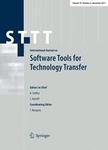版权所有:内蒙古大学图书馆 技术提供:维普资讯• 智图
内蒙古自治区呼和浩特市赛罕区大学西街235号 邮编: 010021

作者机构:Bosch IO GmbH Ullsteinstr 128 D-12109 Berlin Germany
出 版 物:《INTERNATIONAL JOURNAL ON SOFTWARE TOOLS FOR TECHNOLOGY TRANSFER》 (Int. J. Softw. Tools Technol. Trans.)
年 卷 期:2025年第27卷第1期
页 面:93-102页
核心收录:
学科分类:08[工学] 0835[工学-软件工程] 0812[工学-计算机科学与技术(可授工学、理学学位)]
基 金:Federal Ministry for Economic Affairs and Climate Action of Germany [01MT20001J]
主 题:IoT Asset Administration Shell I40 Digital twin System integration Pattern language Enterprise integration patterns
摘 要:The Asset Administration Shell (AAS) specifies digital twins for physical assets, which allow a unified access to data and digital services available for it. Setting up an AAS infrastructure allows manufacturers to cope with heterogeneous and fragmented data sources for better data utilization, e.g., in AI-based decision systems. An AAS provides the infrastructure to link devices with connected data and services, which are often already exposed by an IoT backend. We derive four integration approaches (Push with Adapter, Push with Bridge, Pull with Wrapper, and Pull with Bridge) from the Enterprise Integration Pattern language, and discuss their suitability to the integration of IoT backends with the AAS based on properties such an integration needs to fulfill. We present Proof-of-Concept implementations for two promising approaches (Push with Adapter, Pull with Bridge). Based on experience gained in the PoC implementations, we evaluate when to apply which approach. We found that the Pull with Bridge approach is the most suitable in most cases.